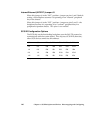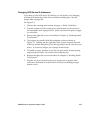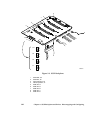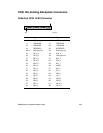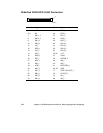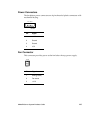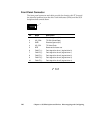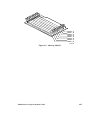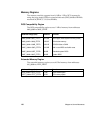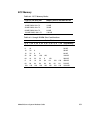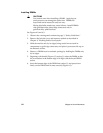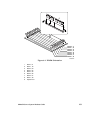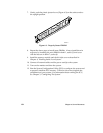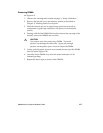
148
Chapter 6 Server Resources
Memory Module Resources
The memory module contains eight DIMM sockets for installing memory. It
supports from 16 MB to 1 GB of EDO ECC 3.3 V 60 ns DRAM, mounted on
JEDEC DIMMs. You may install mixed sizes and types of DIMMs in the
eight memory banks; however, their speeds must be the same. Always
install the DIMMs in sequence by starting with bank 0 (socket J1, closest to
the system board), then bank 1 (socket J2), and so on with bank 7 (socket J8)
as the last one.
To avoid potential memory problems, use only DIMMs from JEDEC-
compatible manufacturers that have been tested for compatibility with the
memory module. Contact your sales representative or dealer for a list of
approved DIMMs.
ECC memory detects and corrects single-bit errors from DRAM in real time,
allowing your system to function normally. It detects all double-bit errors
but does not correct them; it also detects all three-bit and four-bit adjacent
errors in a DRAM nibble but does not correct them. When one of these
multiple-bit errors occurs, the PMC generates an SERR (system error) which
usually halts the system. ECC is calculated on a 64 bit wide memory basis.
The system supports both base (conventional) and extended memory. Base
memory is located at addresses 00000h to 9FFFFh (the first 640 KB).
Extended memory begins at address 0100000h (1 MB) and extends to
FFFFFFFFh (4 GB), which is the limit of addressable memory. The top of
physical memory is a maximum of 1 GB.
Some operating systems and application programs use base memory; for
example, MS-DOS, OS/2
†
, and UNIX. Other operating systems use both
conventional and extended memory; for example, OS/2 and UNIX.
MS-DOS does not use extended memory; however, some MS-DOS utility
programs such as RAM disks, disk caches, print spoolers, and windowing
environments use extended memory for better performance.



